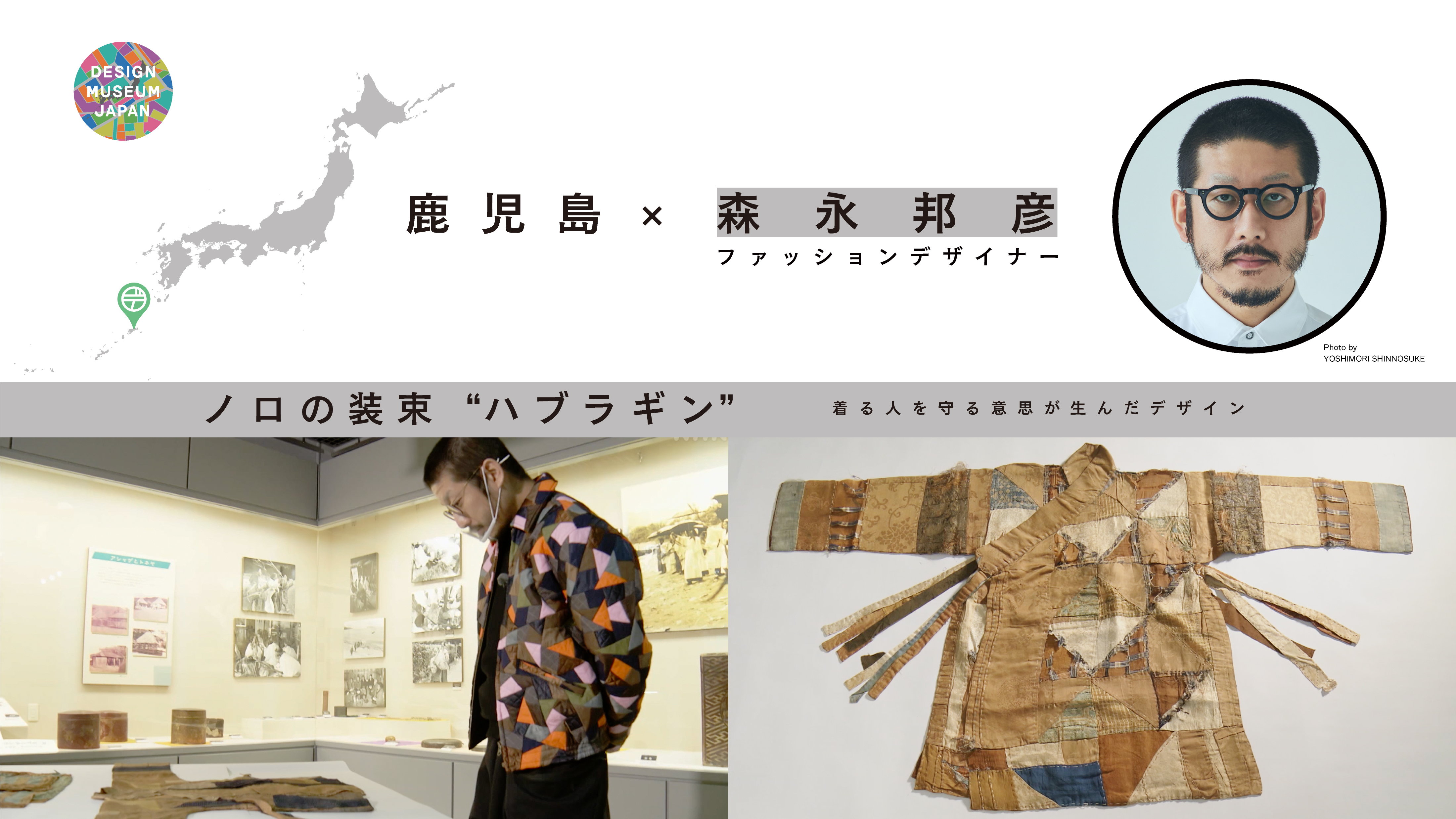Kazuko Koike researched the Nishimonai Bon Festival dance costumes of the town of Ugo in Akita Prefecture. The festival’s roots are said to date back to the 1280’s in prayers for the people’s ancestors and bountiful harvests. It has long been loved by local people as the annual event that releases them from their daily toil and everyday existence. Efforts to conserve and pass on the traditions led in 1956 to the dance being listed as a National Important Intangible Folk Cultural Property, making it the first Bon dance to receive this designation. In 2002, it was also added to the UNESCO Intangible Cultural Heritage list.
Koike describes the Nishimonai Bon Festival dance as a comprehensive performance. In addition to the music and choreography, she is impressed by how the dance costumes highlight the sacredness of the event.
Kazuko Koike Creative Director
Nishimonai Bon Festival Dance Costumes

DESIGN TREASURE
Costume Memories that Transcend Time

The edge stitching

The Nishimonai Bon Festival dance
CREATOR

Photo by Taishi Hirokawa
Kazuko Koike Creative Director
Born in Tokyo in 1936,
Koike participated in the founding of Muji and has continued to provide advice and support ever since. From 1983-2000, as founder and president of the alternative, Sagacho Exhibition Space, she introduced many contemporary artists in Japan and abroad. Her exhibitions of recent years have included "Sagacho Exhibit Space 1983-2000: Fixed Point Observation of Contemporary Art" at the Museum of Modern Art, Gunma, and "Alternative! Kazuko Koike Exhibition - Soft-Power Movement of Art & Design" at 3331 Arts Chiyoda.
The spirituality is apparent from the first preparations, and connects the feelings of the whole town
The Nishimonai Bon dance is restrained and dignified. “It is so quiet,” says Koike. “It connects with the spirits, which is what the Bon dance is for.” Women perform the central role in this long-preserved ritual, practicing the dance and preparing the costumes all year as a part of everyday routine. On the day of the dance, the women then turn their backs on their housework, don the exquisite costumes, and throw themselves into this non-everyday interaction with their ancestors. Koike says, “I think that preserving this dance is important for the town, and also in the family.” The Bon dance’s twin facets of the everyday and non-everyday is conveyed in costumes so finely balanced between the gaudy and the plain.

The Nishimonai Bon Festival dance
The garments convey the beauty of time well spent, and are wonderful to wear
Koike’s attention is caught especially by the edge stitching of the garments. Each household takes apart old garments passed down in the family and sews the parts together in new ways. The central sections use colorful Yuzen resist-dyed fabrics, like a picture, and outside plainer fabrics provide the frame. Observing these exquisite dispositions, Koike says she loves seeing “how design-like qualities emerge unconsciously through the ingenuity and imagination of the maker.”
A seamstress shows Koike garments made more than a century ago. “I was jolted by the sweat stains on these garments that have been worn and cherished over the years,” says Koike. “That brought tears to my eyes.” The edge-stitched dance costumes recall the forms of the people who came before.

The fabric pattern is simple, but the impression is different depending on the combination.

Surrounded by a sober cloth like a picture frame, the fancy cloth in the center stands out like a picture.

Koike examines the edge stitching.
Props to Focus on the Prayers the Dance Is For
The Nishimonai Bon dancers wear hoods known as Hikosazukin and low-brimmed straw hats, the Amikasa. Koike observes that the astonishing shapes not only generate an extraordinary atmosphere but, by hiding the face, also draws attention to the beauty and features of the garments. “It is dramatic and a kind of costume play,” says Koike. “The dancers surely feel raised to a higher dimension.” “The dancers,” she continues, “their faces concealed, are free to focus on the dance. Perhaps they enter a trance-like state?” Koike’s imagination leads her from one compelling intuition to another. “Are the faces beneath the Hikosazukin those of the dead?” These props can be said to further underpin the spirituality of the Bon dance.

Left: Hikosazukin
Right: Amikasa Photo courtesy Future Industry Exchange Bureau (Tourism)


Koike wearing Hikosazukin hood and low-brimmed straw hats
Where Can We See This Design Treasure?
The Nishimonai Bon Odori Dance
Honcho Nishimonai, Ugo-machi, Akita (commonly known as Honcho Street)
Every year from 16 to 18 August
Click here for more details.
Nishimonai Bon Dance Hall
Honcho-108-1 Nishimonai, Ugo, Ogachi District, Akita 012-1131
Click here for more details.

Photo courtesy of Ugo Town Tourism and Products Association




























